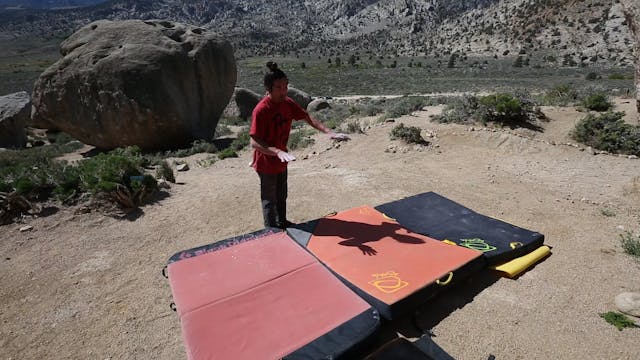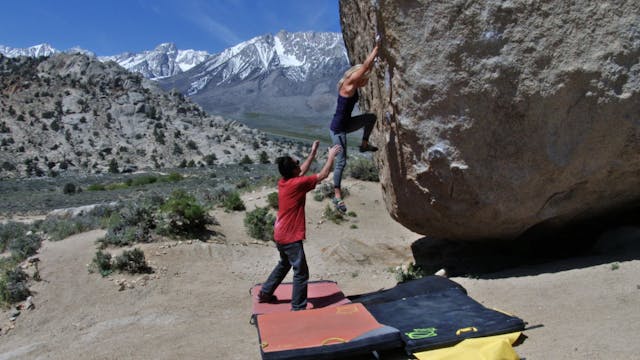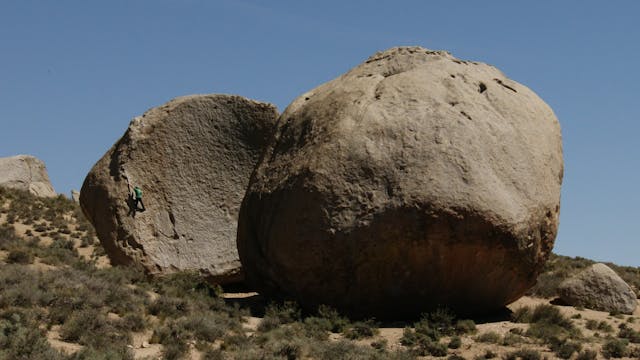Bouldering: 3. Pad Placement and Spotting
Bouldering
•
1m 54s
Pop Quiz: How many pad placement and spotting errors can you count, towards the end of this video?
We have talked about the importance of crash pads, pad positioning, and pad leveling. Now let’s take a deeper look at proper pad placement and spotting during a climb.
Placement - Once the ground has been cleared of tripping hazards or falling hazards, the pads are positioned beneath the fall zone, and leveled to remove gaps between the pads. Stack pads as needed.
Spotting - The spotter can now get in position to spot (i.e. help protect) the climber. If the climber is using pads to help reach the start, the spotter will quickly reposition the pad(s) once the climber is up on the boulder problem. Once the climber begins bouldering, the spotter should position themselves slightly behind the climber so that, were the climber to fall, they won’t fall on the spotter! The spotter should be free of the fall zone, but still able to help direct the climber’s fall to the center of the pad.
While spotting, it’s important to also consider factors such as:
- Gently cradling the head and neck
- Guarding against dangerous rock protrusions
- Being aware of severe ground angles
We hope you found this video helpful. Feel free to comment below with questions or thoughts!
Please remember, climbing is inherently dangerous. Climb at your own risk.
Up Next in Bouldering
-
Bouldering: 2. Leveling Pads
Let us take a closer look at leveling pads while bouldering.
We touched on this in a previous video, but we wish to reiterate how important it is to make sure there are never gaps between pads. Falling and landing between pads leads to serious injury.
Always be sure to line pads alongside o...
-
Bouldering: 1. Crash Pads
Crash Pads are an important tool, and useful in risk assessment.
A few factors to consider when using crash pads:
1. Which landing areas need padding?
2. Will the pad’s location disturb plants or animals around the boulder?
3. Is one crash pad enough protection, or will you need to “s...
-
Bouldering: 4. Risk Assessment
Bouldering, while not as high in the air as other types of climbing, is no less dangerous.
Most common outdoor climbing injuries stem from boulder falls. Give extra consideration to your surroundings when bouldering.
Below are a few things to consider when assessing the risks of each boulde...


